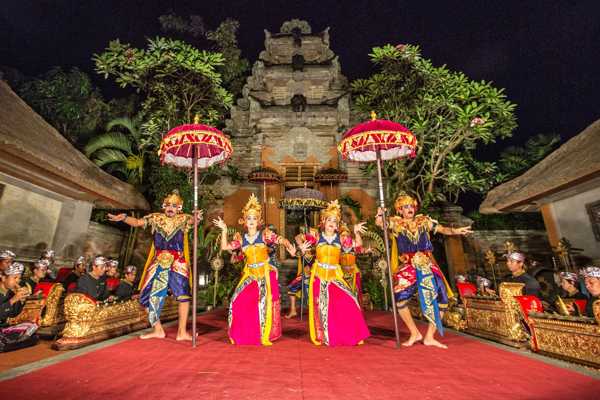Besakih Temple is often referred to as Bali’s ‘mother temple’ – a grand complex of at least 86 clan temples and shrines on the south-western slopes of Mount Agung. At least 70 celebrations take place at Besakih every year, as each shrine has its own anniversary. Besakih is considered to be the biggest and holiest of Bali’s temples. Its high location offers spectacular countryside views with rice paddies, hills, mountains, and streams. Exploring the whole site can take a day. Pura Besakih is the only temple open to every devotee from any caste group.
Besakih Temple in Bali - one of the highlights of 39 Best Things to Do in Candidasa and East Bali and 26 Must-See Temples in Bali (Read all about Bali here)
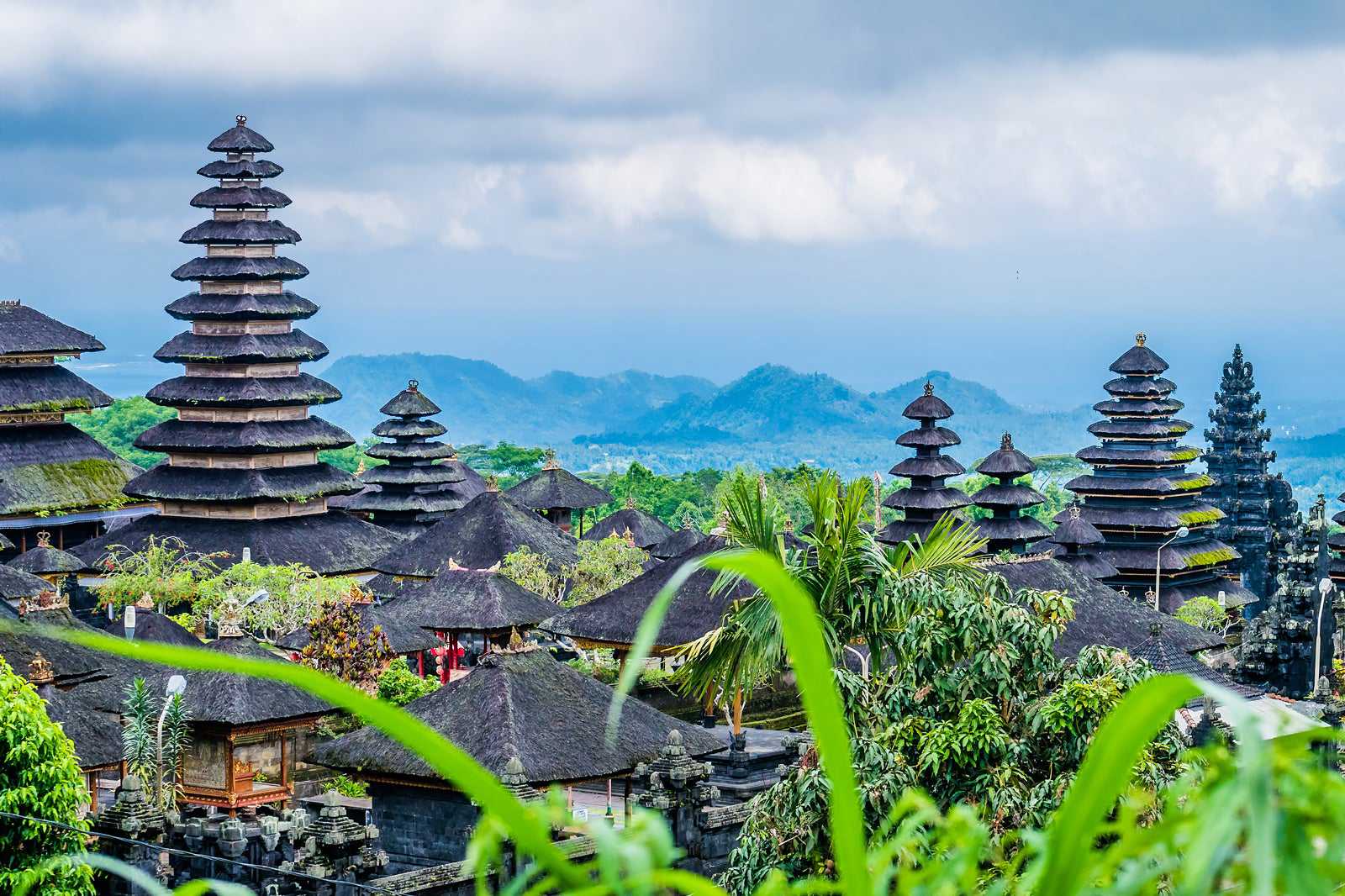
For the Balinese, visiting the temple sanctuaries of Besakih is a special pilgrimage. Mount Agung’s position gives it an almost mystical quality. Several stairs lead up to the sacred mountainside, leading to temples that vary by type, status, and function.
Pura Besakih has 3 main temples dedicated to the Hindu trinity. Pura Penataran Agung (in the centre) has white banners for Shiva, the destroyer; Pura Kiduling Kreteg (to the right) features red banners for Brahma, the creator; and Pura Batu Madeg represents Vishnu, the preserver, with its black banners. You can visit many other smaller temples in Pura Besakih, though many of their inner courtyards are only reserved for pilgrims.
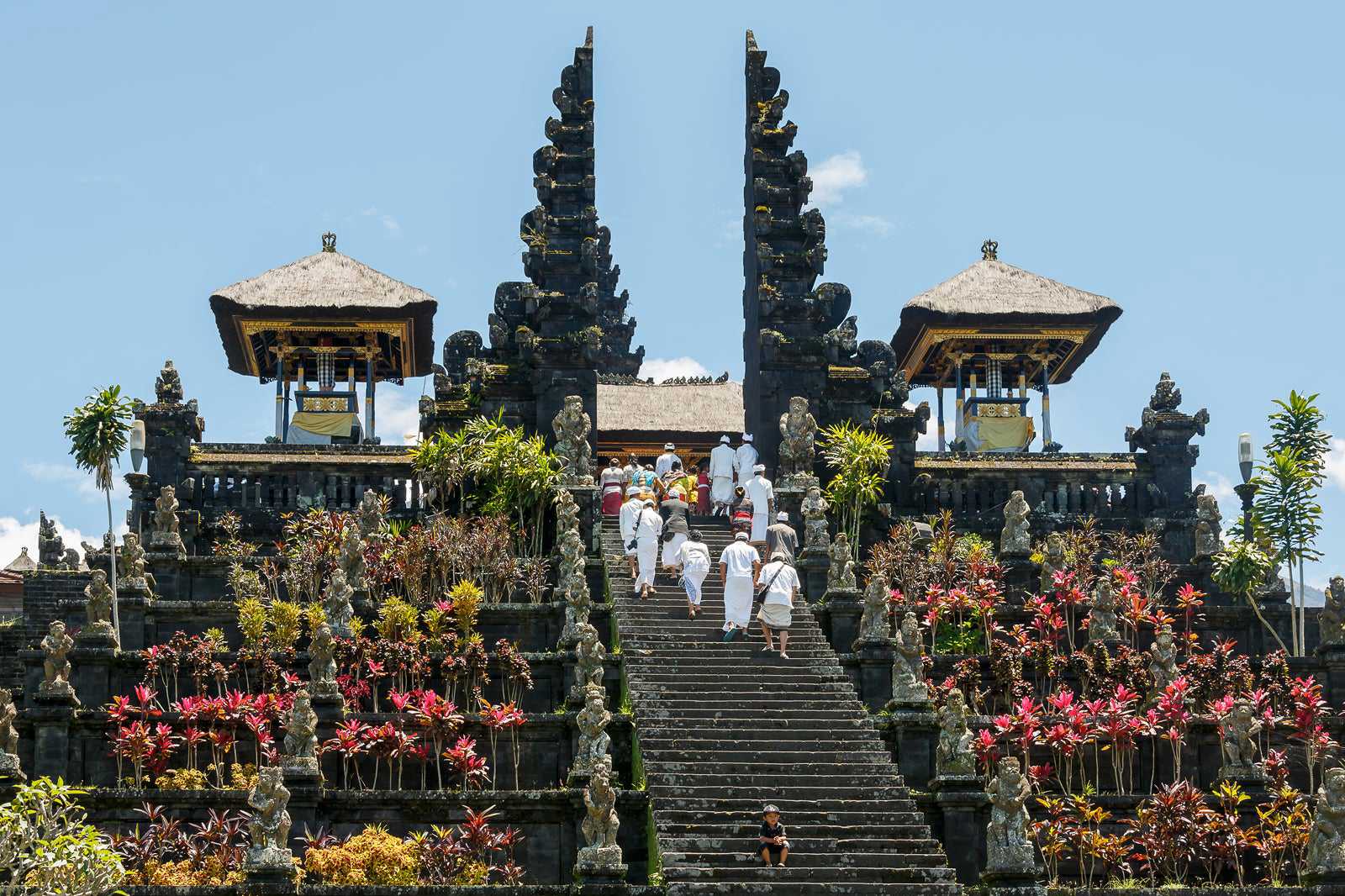
Billede taget af Photo by CEphoto, Uwe Aranas (CC BY-SA 3.0) Redigeret
History of Besakih Temple
Pura Batu Madeg contains a central stone indicating that the area of Pura Besakih was already regarded as a holy place since ancient times. In the 8th century, a Hindustani monk had revelations to build homes for people during his isolation. Throughout the process, many of his followers died due to illness and accidents. Upon completion, it was called ‘Basuki’, referring to the dragon deity ‘Naga Besukian’, believed to inhabit Mount Agung. The name eventually evolved into ‘Besakih’.
Other shrines were gradually built and Pura Besakih was made the main temple during the conquering of Bali by the Majapahit Empire in 1343. Since then, Pura Besakih has had several restorations as earthquakes in 1917 and Mount Agung’s series of eruptions in 1963 damaged the complex. The lava flow evaded Pura Besaki – locals believe that he deities wanted to demonstrate their power without completely destroying the holy complex.
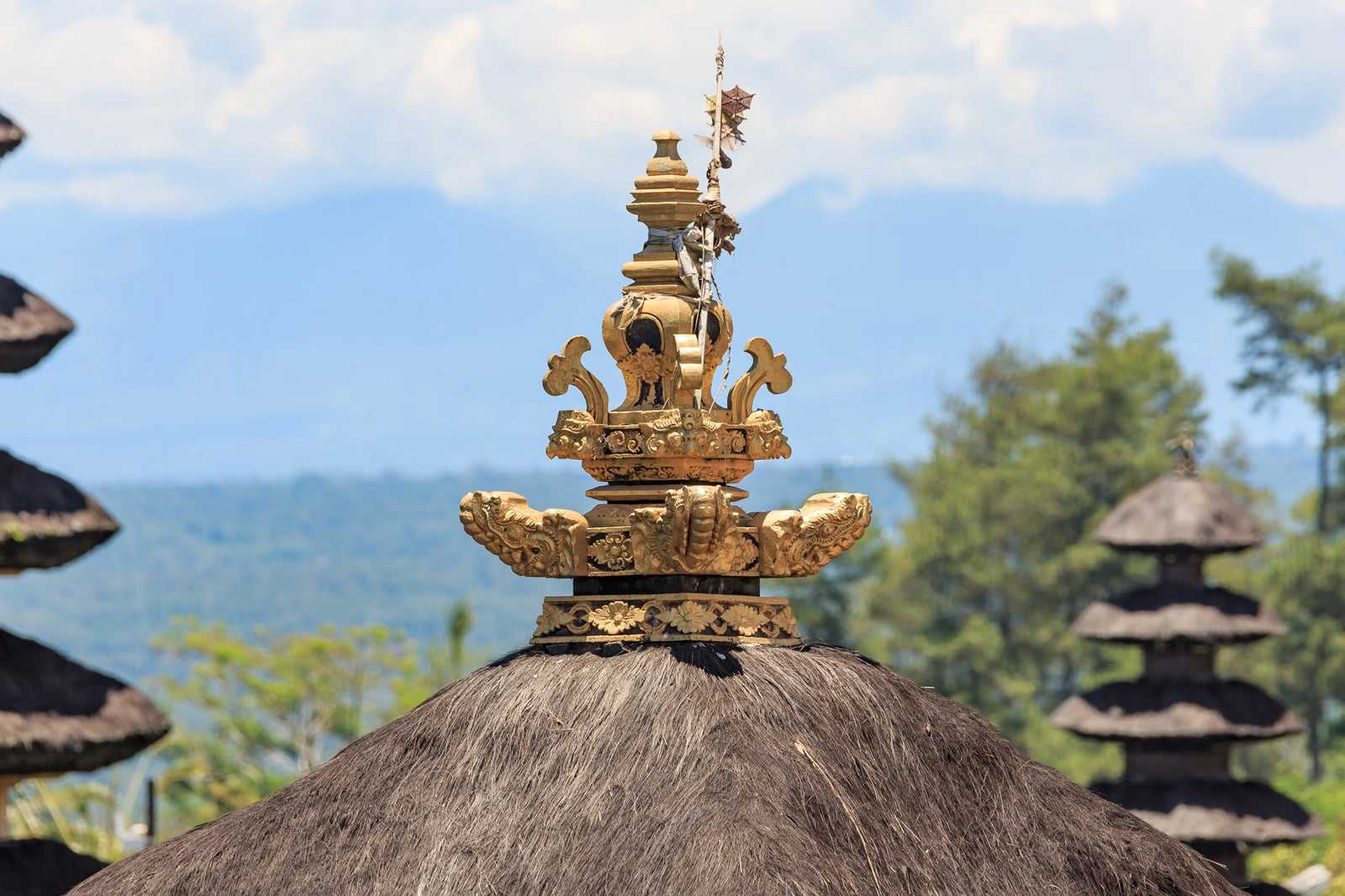
Billede taget af Photo by CEphoto, Uwe Aranas (CC BY-SA 3.0) Redigeret
Besakih Temple highlights and features
The largest temple in the complex, Pura Penataran Agung, has different areas representing the 7 layers of the universe, each with their own shrines. Pura Pasimpangan lies on the downstream side (on the east of the main street), while Pura Pangubengan can be found upstream. These shrines are about 3 km apart.
Closest to Mount Agung's peak, Pura Pangubengan offers great vistas and is about a 30-minute walk of the main Pura Penataran Agung. East of Pura Pangubengan is Pura Batu Tirtha. It is where holy water is sourced for the karya agung ceremonies at Pura Besakih and the local villages.
The 4 temples in the complex reflect the 4 deities governing their respective compass points. There's Pura Batu Madeg in the north, Pura Kiduling Kreteg to the south, Pura Gelap in the east, and Pura Ulun Kulkul in the west.
The shrine of Meru Tumpang Sebelas at Pura Batu Madeg houses the central stone, called batu ngadeg. This spot was where Vishnu is believed to have descended. Within the courtyard of Pura Batu Madeg, in front of Meru Tumpang Sebelas, you’ll find the Pesamuan shrine (quadrangular-shaped with 2 lines of 16 poles) which depicts how Vishnu’s power interrelates with the world.
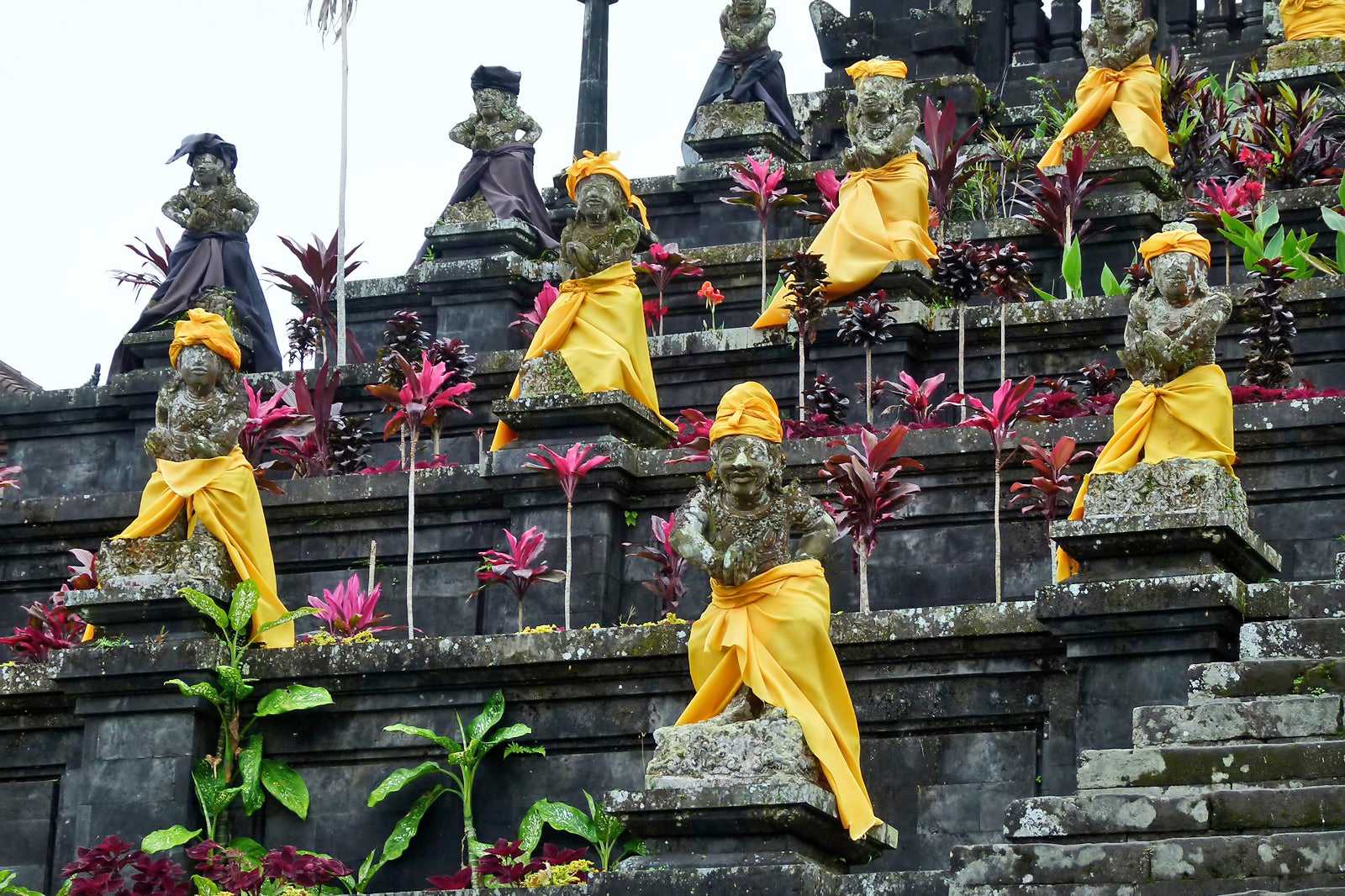
Billede taget af Schnobby (CC BY-SA 3.0) Redigeret
About 20 minutes' walk northwest down a footpath to the valley and along a river is Pura Peninjoan. Erected on a tiny hill, it offers beautiful views which include all the shrines of Pura Penataran Agung, the coast and southern Bali in the distance. On the west is Pura Ulun Kulkul, famous for the most precious kulkul (Balinese wooden slit gong) on the island. A kulkul is a signalling device to summon or convey special messages.
On the northern side of Pura Ulun Kulkul is Pura Merajan Selonding where the 'Bredah' inscription chronicles a king in Besakih. It is also where a set of ancient Selonding gamelan are kept. Pura Gua, located on the eastern side of the main street, is the home of the dragon deity. There’s a big cave at the canyon of the river on the east that has its mouth closed due to erosion, but people still sometimes practise yoga there.
Pura Jenggala, southwest of Pura Penataran Agung, is also often referred to as Pura Hyang Haluh by local devotees. The ‘Setra Agung’ burial grounds is south of the temple. Here, you'll find sacred and ancient stone statues in the form of the mythical Garuda bird. Pura Basukian Puseh Jagat is located southeast of Pura Penataran Agung, the main foundation of Pura Besakih.
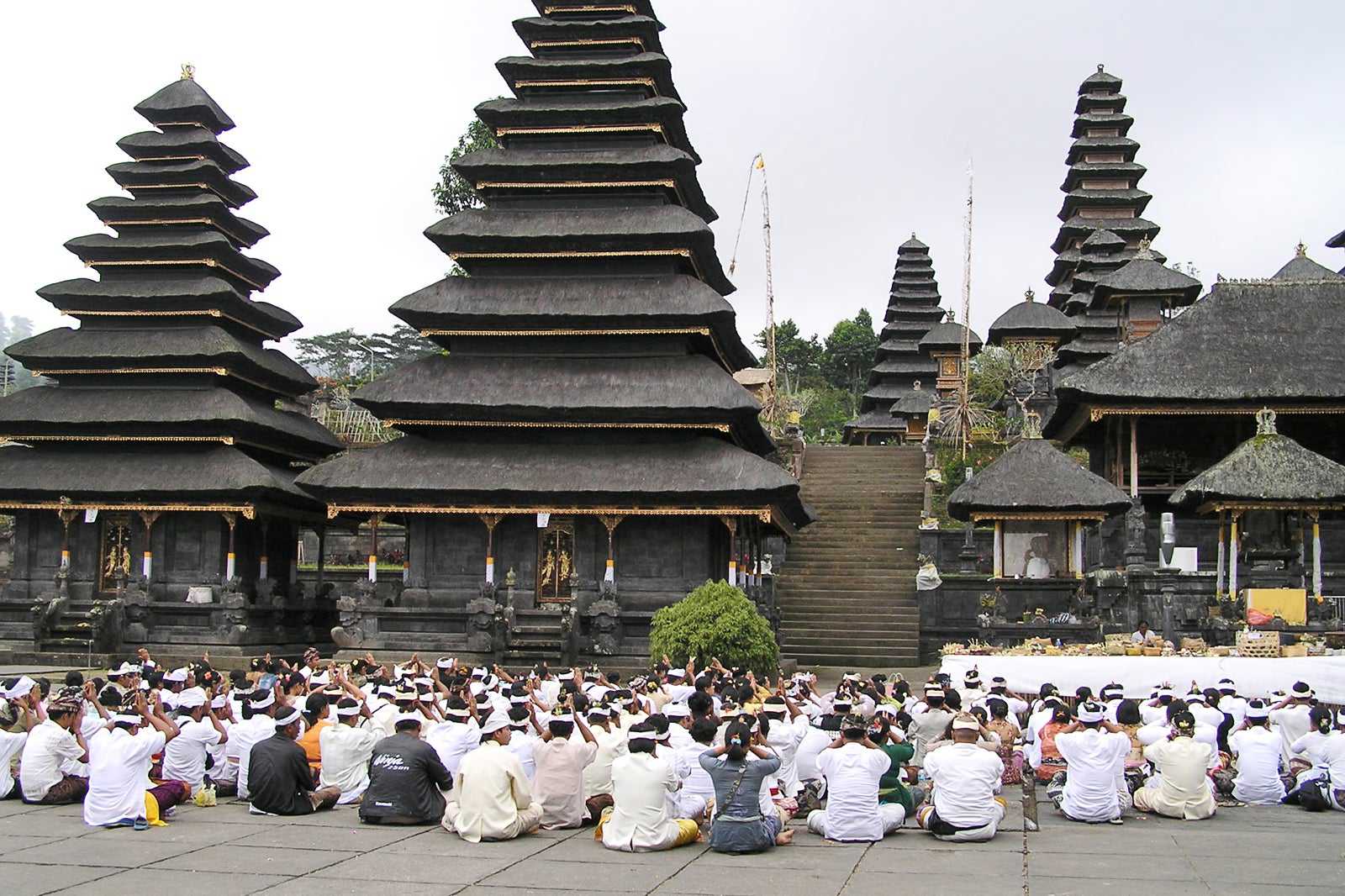
Good to Know about Besakih Temple
Pura Basukian, Pura Penataran Agung, and Pura Dalem Puri are the mother of all village’ temples, namely Pura Puseh, Pura Desa, and Pura Dalem. Their shrines contain religious literature referring to how a temple must be built.
During the day, Besakih becomes a crowded tourist trap, with self-professed ‘temple guards’, touts, hawkers, and more. Bear in mind that you should wear a proper top, a sarong, and a sash. The best visiting times of the day are in the early morning and the evening as the complex is much quieter during these hours.
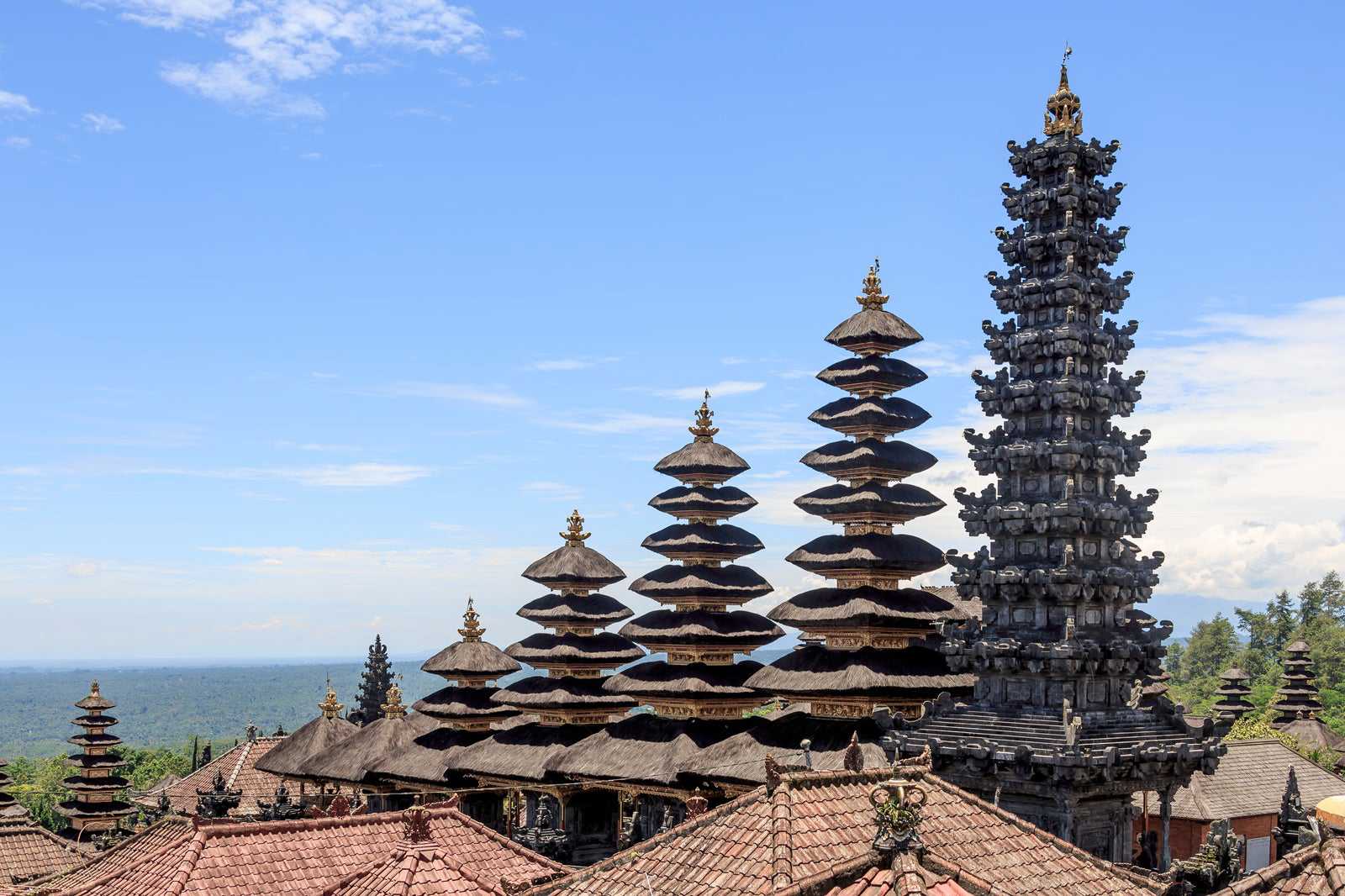
Billede taget af Photo by CEphoto, Uwe Aranas (CC BY-SA 3.0) Redigeret
The official guides are easily identifiable with their symmetrically patterned traditional Batik shirts. The service is not free, though not expensive at all either considering how big the complex is. There's no obligation to hire a guide for tours around the complex.
Sarongs and sashes are available for rent. You can also purchase them at the many stalls outside, and bargaining is recommended. Women on their period aren’t allowed to enter Besakih Temple. Taking along local companions outside the official hours is highly recommended.
To get there from Sanur, take the Kusamba Bypass to Klungkung. Head north through Klungkung and take the right-hand turn at Menanga to get to Besakih. The journey from Sanur shouldn’t take longer than 2.5 hours.
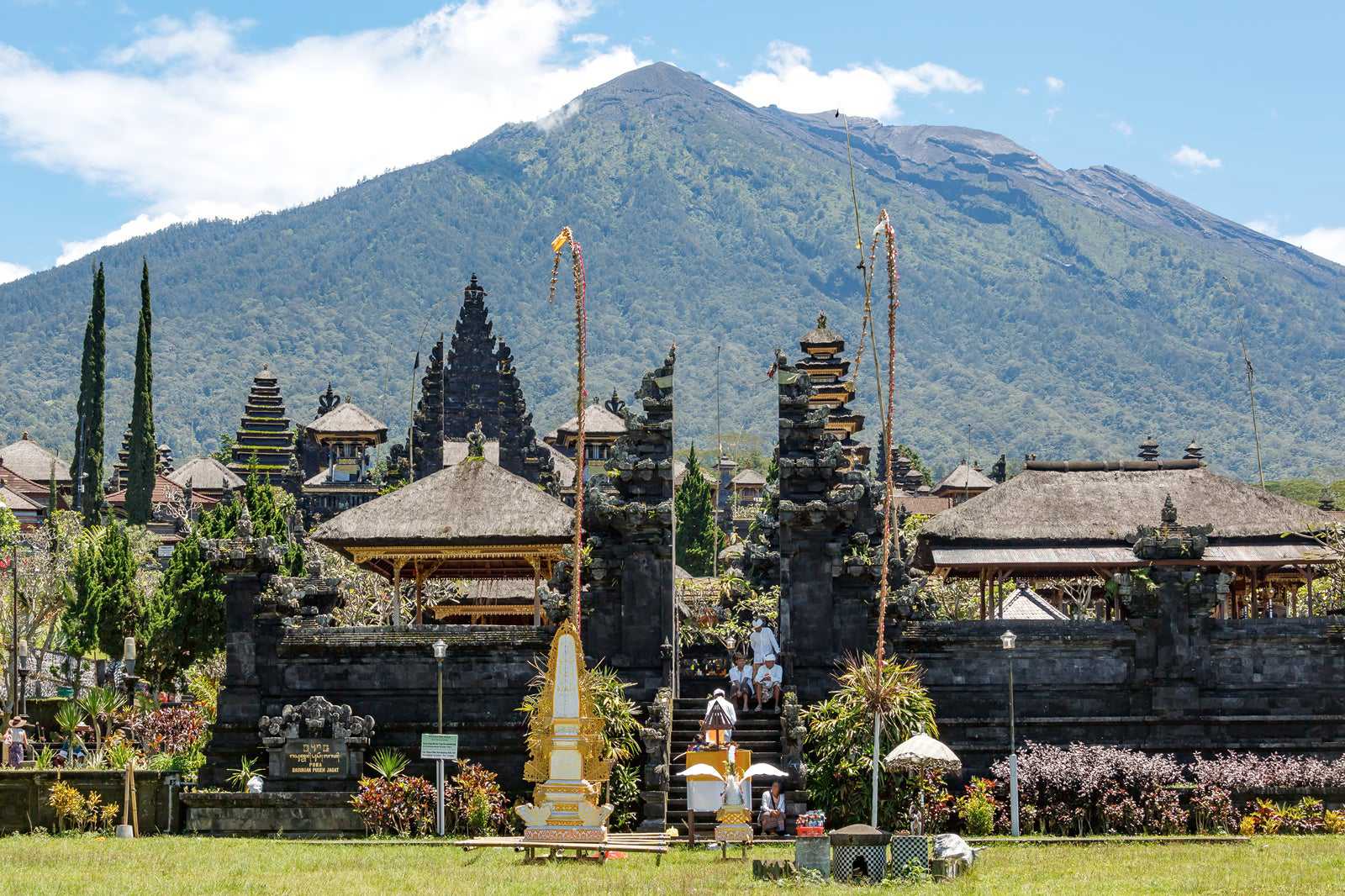
Billede taget af Photo by CEphoto, Uwe Aranas (CC BY-SA 3.0) Redigeret
Besakih Temple in Bali
Adresse: Besakih, Rendang, Karangasem, Bali 80863, Indonesia
Åbningstider: Daily from 8am to 5pm



















